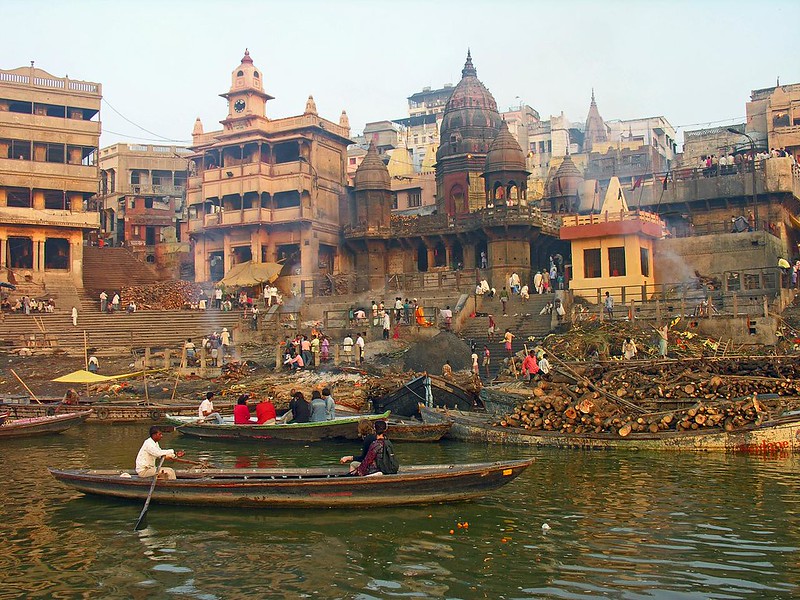Poverty and Plastic Pollution in the Sundarbans
 From space, the “Beautiful Forest,” or the Sundarbans, looks like a dreamscape — dark mangrove forests nestled among a lacy lattice of luminous streams that snake into the Bay of Bengal. Zooming closer reveals grimmer realities. The Sundarbans are a part of the world’s largest delta, the Ganga-Brahmaputra delta, covering most of Bangladesh and large amounts of West Bengal in India. Home to more than 100 million people, it is one of the most densely populated regions globally and faces extreme poverty and plastic pollution.
From space, the “Beautiful Forest,” or the Sundarbans, looks like a dreamscape — dark mangrove forests nestled among a lacy lattice of luminous streams that snake into the Bay of Bengal. Zooming closer reveals grimmer realities. The Sundarbans are a part of the world’s largest delta, the Ganga-Brahmaputra delta, covering most of Bangladesh and large amounts of West Bengal in India. Home to more than 100 million people, it is one of the most densely populated regions globally and faces extreme poverty and plastic pollution.
Fringed by the large arc of the Bay of Bengal, the coastal population here relies on the ocean, upstream rivers, rich delta soils, monsoons and mangrove forests for its livelihood. Primary industries are marine and freshwater fishing, rice farming and tourism. Life here teeters on a fragile balance with nature. Annual monsoons cause floods and rising ocean levels threaten to submerge the lands. However, they also bring fertility and rich aquatic life that are vital to the livelihood of millions.
A particularly grave human-made threat to this delicate coastal ecosystem is plastics. Plastics pour into the bay from upstream rivers and neighboring areas and choke the coastal lands with the locally generated waste.
Impact of Plastic Pollution in the Sundarbans
The plastic in the food supply chain gravely impacts the fishery industry of the delta region, as evident in its clogged mangroves and plastic-choked fish farms. Plastic also pollutes the population’s primary food source: fish and other aquatic life. As plastics disintegrate into fundamental particles, they make their way into the biota and eventually into humans, causing many health issues.
The area’s waste-blanketed beaches also deter tourism. Accumulations of plastic mar beautiful coastlines due to poor infrastructure and waste management.
Additionally, increasing plastic use by ever-growing populations depletes natural resources and poisons life-giving food sources. This creates conditions for poverty and unsustainable living in the Sundarbans. Reducing plastic accumulation in the ocean and coastal areas of the Bay of Bengal is critical and needing concerted, multi-pronged actions.
Addressing the Plastic Pollution Issues at the Source
Measuring and identifying pollution problems upstream, as with the National Geographic-led Ganges Sea to Source Expedition project, will be vital to deploying preventive solutions closer to their source. Projects such as this one seek to understand the plastics’ journey in the river, tracking the patterns, volumes and trajectory into the ocean. The Ganges, one of the world’s largest rivers, is a principal source of water into the Bay of Bengal and a principal source of its plastics. The Ganges and two other rivers are estimated to empty one to three billion microplastics into the Bay of Bengal each day.
Waste Management Programs
Waste management programs to reduce plastic in the ocean and neighboring coastlines are critical in this fight against poverty and plastic pollution. Such programs can include installing waterway bins and collectors in the bay and plastic collection programs in coastal areas. Such programs have the added benefit of employing local labor in building these infrastructures. However, solutions such as installing obstructive bins in the ocean have their limitations. A push to longer-term restructuring and design will be necessary while relying on short-term solutions.
Awareness and Innovative Products
Large-scale education campaigns on anti-littering and plastic-use awareness are also crucial to addressing current pollution challenges. Encouraging reuse, responsible disposal of wastes and moving to environment-friendly alternatives in daily life can help slow the current plastic pollution rates.
In the long term, establishing programs that focus on bio-friendly products and innovations offers the best route out of the current predicament. Boosting programs and research in topics that rethink current practices and modes of plastic-dependent systems can also stimulate the local economy and employment while generating viable solutions. Levying taxes to deter plastic use should also be considered within a broader governance and policy framework.
As gloomy as the Sundarbans’ current pollution circumstances seem, there are many paths to reversing plastic’s impacts in the Bay of Bengal while boosting labor in local populations with innovation, research and collective action.
– Mala Rajamani
Photo: Flickr
